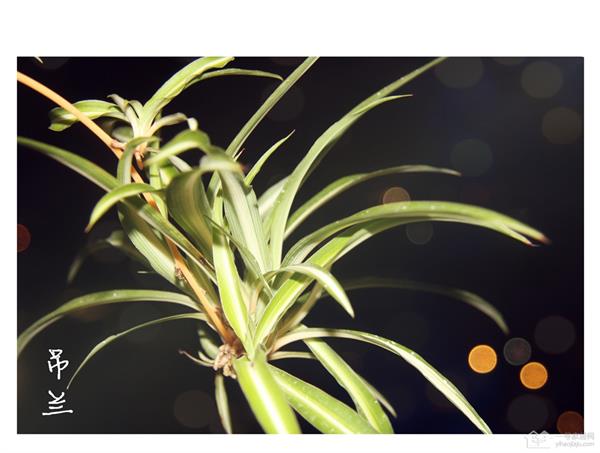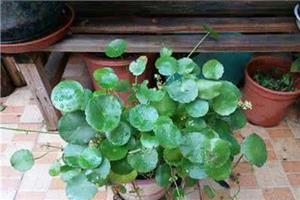Do you know which indoor plants are used to purify the air?
How to keep the air fresh in the room is a problem that we must consider in our daily life. In addition to the air purifier, more people will choose to put indoor plants that purify the air. Let's find out which plants are better.

1. Hanging orchid: the ability to absorb harmful chemicals in the air exceeds the air screening procedure. 1 pot of orchid, within 24 hours, can absorb indoor carbon monoxide, nitrogen peroxide and other volatile harmful gases.
2. Cactus: it is characterized by closing stomata during the day to prevent water evaporation. Open the stomata at night to absorb carbon dioxide and release oxygen. If you put two or three pots of cactus indoors, you can increase the negative ions in the air, which is greatly conducive to sleep and health.
3, tiger tail orchid: natural scavenger, one pot of tiger tail orchid can absorb more than 80% of harmful gases in the room of about 10 square meters, two pots of tiger tail orchid can basically completely purify the air in the general room; tiger tail orchid can also release a lot of oxygen during the day.
4. Aloe vera: the flower proverb says, "hanging orchid aloe vera is a strong hand, formaldehyde is scared to avoid." Evergreen aloe can absorb peculiar smell for a long time. In addition, aloe has a cosmetic effect.
Rose: it can absorb hydrogen sulfide, hydrogen fluoride, benzene, ethylphenol, ether and other gases; it also has considerable resistance to sulfur dioxide and nitrogen dioxide.
Ivy: a pot of ivy can destroy 90% of the benzene in a room of 8 to 10 square meters, deal with bacteria and other harmful substances brought back from outdoors, and even absorb dust that is difficult to absorb by vacuum cleaners.
7. African jasmine: the volatile oil produced has a significant bactericidal effect. Can make people relax, conducive to sleep, but also improve work efficiency.
8. Silver Queen: it is famous for its unique air purification ability: the higher the concentration of pollutants in the air, the more it can exert its purification ability! Therefore, it is very suitable for dark rooms with poor ventilation.
9. Duck foot wood: leaves can absorb nicotine and other harmful substances from the smoky air and convert them into harmless plant-owned substances through photosynthesis. In addition, it can reduce formaldehyde concentration by about 9 milligrams per hour.
10. Tortoise back bamboo: the function of purifying air is slightly weak, it is not like hanging orchid. Aloe is a versatile person who purifies the air. However, the effect of tortoise back bamboo on removing formaldehyde in the air is more obvious. In addition, tortoise-backed bamboo has the effect of absorbing carbon dioxide at night. It is of great help to improve indoor air quality and increase oxygen content.
11. Rich bamboo: a healthy plant suitable for bedrooms, rich bamboo can help rooms that do not often open windows and ventilation to improve air quality, with toxic functions, especially in bedrooms, rich bamboo can effectively absorb waste gas and improve the private environment of the bedroom.
12. Rubber tree: a generalist who eliminates harmful plants and is resistant to harmful gases such as carbon monoxide, carbon dioxide and hydrogen fluoride in the air. Rubber tree can also eliminate the pollution of respirable particles and effectively detain indoor dust.
13. Asparagus: a protective umbrella to eliminate bacteria and viruses. Asparagus contains plant aroma with antibacterial ingredients, which can remove bacteria and viruses from the air and has a health care effect.
14. Rich tree: release oxygen and absorb carbon dioxide; suitable for warm, humid and well-ventilated environment, Xiyang is also resistant to shade and convenient for management and maintenance.
15. White palm: an "expert" who suppresses exhaust gases exhaled by the human body, such as ammonia and acetone. It can also filter benzene, trichloroethylene and formaldehyde in the air. Its high evaporation rate can prevent dryness of nasal mucosa and greatly reduce the possibility of disease.
16. Weeping banyan: the leaves and roots can absorb xylene, toluene, trichloroethylene, benzene and formaldehyde, and decompose them into non-toxic substances.
17. Dishui Guanyin: it has the effect of removing dust from the air.
Milan: can absorb sulfur dioxide and chlorine in the atmosphere. After fumigating in the air containing IPPM chlorine for 4 hours, the chlorine absorption capacity of 1 kg dried leaves was 0.0048 grams.
19. Boston fern: the air-purifying plant ranked ninth by NASA is the Boston fern that has always been popular. This cool and relaxing plant is called the "most effective filter plant" for its proven ability to remove mold and toxic substances from indoor air.
20, African chrysanthemum: this plant is not only good at absorbing formaldehyde, but also has a strong ornamental, there are many varieties can be used for cut flowers.
The above is the relevant introduction of this article, I believe you have a simple understanding of this after reading it, if necessary, you can continue to pay attention to the No. 1 home network for more information.
Related
- Wuhan Hospital Iron Tree Blooming Result Was Instantly Frightened by the Gardener Master
- Which variety of camellia is the most fragrant and best? Which one do you like best?
- What is the small blue coat, the breeding methods and matters needing attention of the succulent plant
- Dormancy time and maintenance management of succulent plants during dormancy
- Minas succulent how to raise, Minas succulent plant pictures
- What are the varieties of winter succulent plants
- How to raise succulent plants in twelve rolls? let's take a look at some experience of breeding twelve rolls.
- Attention should be paid to water control for succulent plants during dormant period (winter and summer)
- Watering experience of twelve rolls of succulent plants
- Techniques for fertilizing succulent plants. An article will let you know how to fertilize succulent plants.



